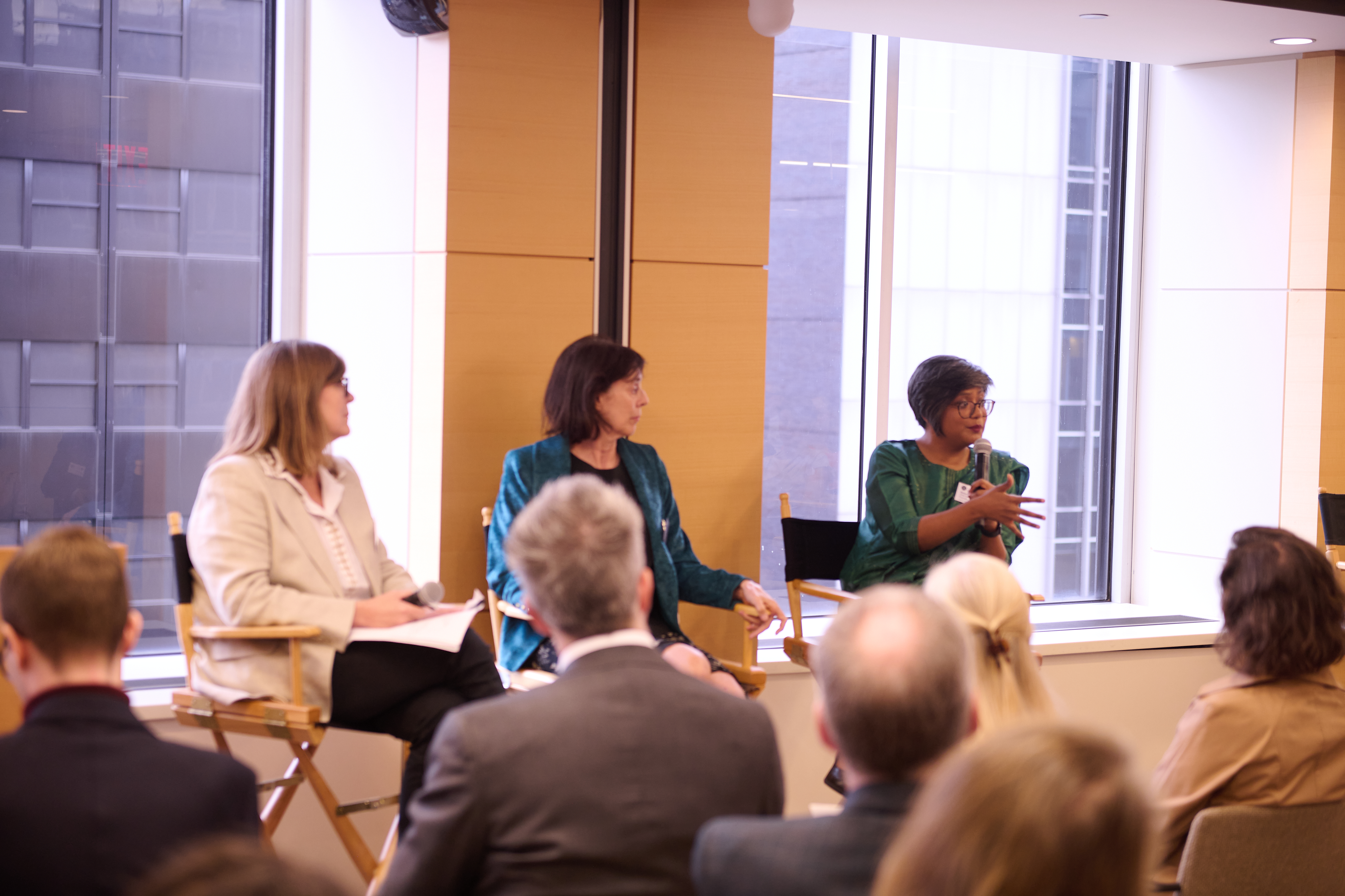
In the heart of New York City, amid the buzz of the United Nations General Assembly (UNGA) week, global leaders gathered to tackle one of the most pressing issues of our time—Antimicrobial Resistance (AMR). A significant side event focused on a unique aspect of the fight against AMR: education and public outreach. The event, held at Carnegie Corporation Headquarters, brought together distinguished panelists, including Professor Anna Levin from the University of São Paulo, Dr. Senjuti Saha from the Child Health Research Foundation (CHRF) in Bangladesh, moderated by Professor Alison Holmes. Each panelist shared examples of innovative AMR education initiatives from around the world.
Though honored to share the stage with such accomplished colleagues, CHRF highlighted the work being done in Bangladesh through the Building Scientists for Bangladesh (BSB) initiative. The program focuses on making AMR, an invisible and often misunderstood threat, more accessible and tangible to students and healthcare workers through hands-on learning.
Dr. Senjuti Saha, shared how they bring science to life in Bangladesh by taking disc diffusion plates—used to test bacterial resistance—directly to students at science camps and to community health workers in their training. What was once an invisible threat becomes something they can see, touch, and understand. CHRF invites students and health workers to their labs, showing them firsthand the importance of addressing AMR through evidence and science.
This approach not only deepens their understanding but also empowers them to be proactive in their communities. CHRF's work is about making science approachable and AMR visible. It is the small moments—when a student first sees the effect of antibiotics on bacterial growth—that spark curiosity and inspire a new generation of scientists and health advocates.
The panel itself showcased diverse approaches to AMR education across the globe. Professor Levin discussed the challenges and successes of educating healthcare workers in Brazil. Together, the panel explored the common challenges of embedding AMR education into national curriculums and the potential for local initiatives to inspire global action.
At the UNGA side event, the work of CHRF in Bangladesh stood out as an example of how community-based educational programs can make a global impact. The discussions that followed emphasized the urgency of scaling educational efforts that address AMR, particularly in low- and middle-income countries where the stakes are highest.
CHRF remains committed to this mission. The journey of the Building Scientists for Bangladesh program is a testament to what can be achieved with a hands-on, interactive approach. There is still much to be done, but through partnerships and global collaboration, CHRF is optimistic about the future of AMR education. The fight against AMR requires collective action, and CHRF is proud to contribute by making the invisible visible, one hands-on lesson at a time.
